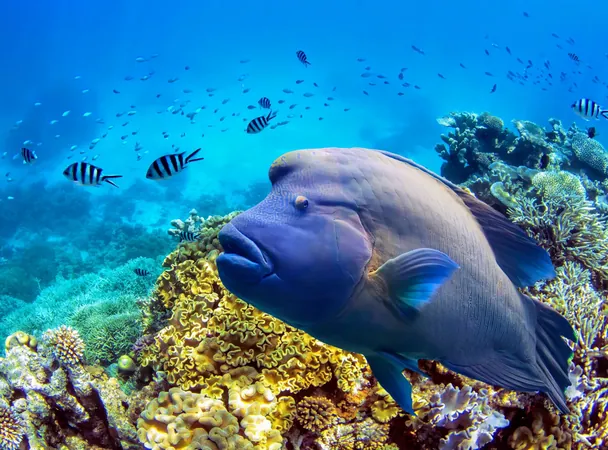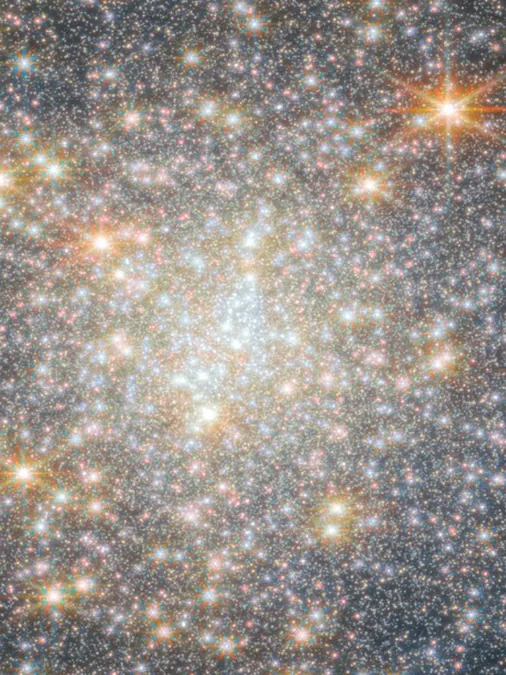
Dramatic Shift in Fish Diversity on the Great Barrier Reef: A Looming Ecological Crisis
2025-01-15
Author: Yu
Unearthing the Changes in Fish Communities
Researchers from Lancaster University in the UK and the Australian Institute of Marine Science (AIMS) analyzed decades' worth of data, spanning from 1995 to 2022, along an impressive stretch of the reef measuring over 1,200 kilometers. The findings reveal a stark alteration in fish diversity and community structures since the 1990s, particularly as we witness an accelerated pace of change over recent years. This has prompted questions about whether long-standing biodiversity patterns are unraveling under multiple environmental pressures.
Historically, fish species richness was expected to follow a "latitudinal diversity gradient" where biodiversity peaks near the equator. However, this long-held belief now appears unstable, with significant shifts observed in different areas of the reef.
The Assault on the Reef
The Great Barrier Reef's health is succumbing to a variety of stressors. Coral bleaching, which has occurred repeatedly over the past two decades, stands out as a significant threat. Events in 1998, 2016, and 2020 decimated coral populations and, with predictions indicating further incidents, such as one expected in 2024, the effects on fish diversity could become even more pronounced.
In addition to coral bleaching, cyclones, pollution, and outbreaks of crown-of-thorns starfish have contributed to the decline of coral abundance, affecting the habitats crucial for numerous fish species. The northern areas of the GBR have reported declines in omnivores and herbivores, while southern regions have seen a troubling increase in these same groups, raising urgent questions about the implications for reef ecosystems.
Continuous Turnover and Its Implications
The study emphasizes an alarming trend of continuous turnover in fish communities. As various disturbances escalate, certain species are being replaced more frequently, causing a lack of stability in fish diversity patterns. This ongoing flux not only reflects the immediate effects of environmental change but suggests that future changes could be even more radical.
Lead author Javier González-Barrios underscored the critical nature of these shifts: "The biodiversity of the Great Barrier Reef is changing long-term, with climate change increasingly compounding existing pressures." His research reveals how both species counts and community compositions continue to evolve without any sign of stabilization.
Coral Composition: The Key to Fish Diversity
Interestingly, the research highlights that it is not merely the quantity of coral cover that influences fish diversity, but the specific composition of coral species—this variation shapes the three-dimensional habitat essential for fish survival.
Dr. Mike Emslie from AIMS pointed out that while some coral species may recover post-disturbance, the habitat complexity they offer may not provide the necessary support for fish communities reliant on that structure.
The Wider Implications for Coral Reef Ecosystems
The ramifications of these changes extend far beyond the underwater world. Healthy fish populations are crucial for maintaining ecosystem processes like controlling seaweed growth and generating sand for coastal areas—assets vital for local tourism and livelihoods. Nick Graham, a marine ecology professor, emphasized that these fish also contribute to food security for millions of individuals dependent on fisheries.
As disturbances become increasingly common, understanding the ongoing changes in fish populations and their consequences is essential for predicting the future health and benefits of coral reefs.
This urgent research, published in *Nature Communications*, calls for renewed global attention on protecting one of the planet's most important marine ecosystems. As we face an uncertain environmental future, the fate of the Great Barrier Reef may very well hinge on our actions today.



 Brasil (PT)
Brasil (PT)
 Canada (EN)
Canada (EN)
 Chile (ES)
Chile (ES)
 Česko (CS)
Česko (CS)
 대한민국 (KO)
대한민국 (KO)
 España (ES)
España (ES)
 France (FR)
France (FR)
 Hong Kong (EN)
Hong Kong (EN)
 Italia (IT)
Italia (IT)
 日本 (JA)
日本 (JA)
 Magyarország (HU)
Magyarország (HU)
 Norge (NO)
Norge (NO)
 Polska (PL)
Polska (PL)
 Schweiz (DE)
Schweiz (DE)
 Singapore (EN)
Singapore (EN)
 Sverige (SV)
Sverige (SV)
 Suomi (FI)
Suomi (FI)
 Türkiye (TR)
Türkiye (TR)
 الإمارات العربية المتحدة (AR)
الإمارات العربية المتحدة (AR)